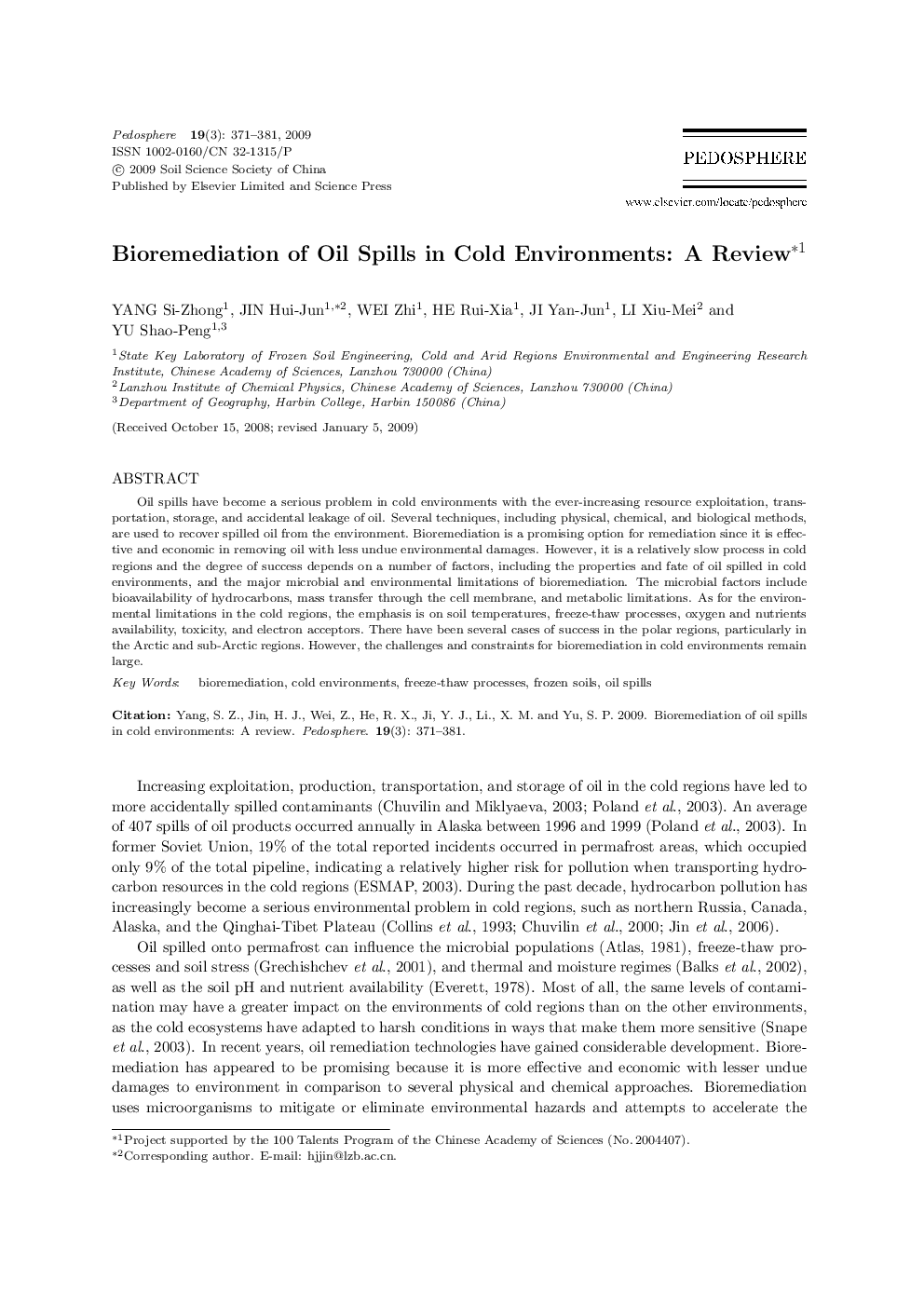| Article ID | Journal | Published Year | Pages | File Type |
|---|---|---|---|---|
| 4581985 | Pedosphere | 2009 | 11 Pages |
ABSTRACTOil spills have become a serious problem in cold environments with the ever-increasing resource exploitation, transportation, storage, and accidental leakage of oil. Several techniques, including physical, chemical, and biological methods, are used to recover spilled oil from the environment. Bioremediation is a promising option for remediation since it is effective and economic in removing oil with less undue environmental damages. However, it is a relatively slow process in cold regions and the degree of success depends on a number of factors, including the properties and fate of oil spilled in cold environments, and the major microbial and environmental limitations of bioremediation. The microbial factors include bioavailability of hydrocarbons, mass transfer through the cell membrane, and metabolic limitations. As for the environmental limitations in the cold regions, the emphasis is on soil temperatures, freeze-thaw processes, oxygen and nutrients availability, toxicity, and electron acceptors. There have been several cases of success in the polar regions, particularly in the Arctic and sub-Arctic regions. However, the challenges and constraints for bioremediation in cold environments remain large.
